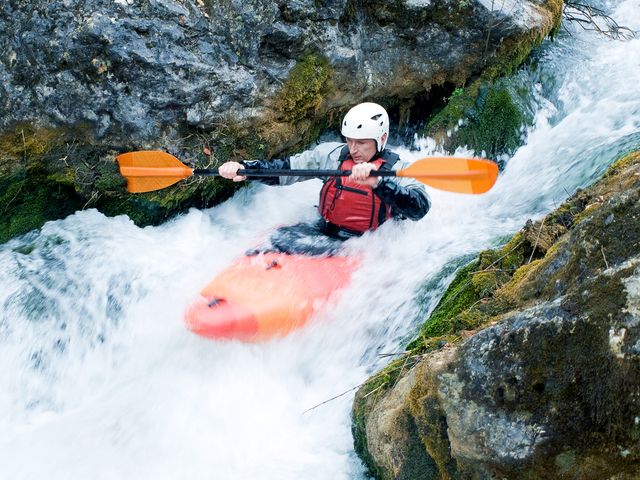Scientists previously thought that the smooth, hairless surfaces of fingers and toes wrinkled up like raisins after they got wet because water passed into the outermost layer of skin, causing it to swell. But recent studies have shown that the wrinkling is not a result of osmosis, but rather an : placing hands or feet in water causes a constriction in blood vessels which reduces the pulp in digits. The loss of internal pressure causes ridges and valleys to form on glabrous skin. The question, of course, is why?
A published by three scientists in the journal Biology Letters suggests the physical change may have developed as a way to improve grip on wet objects. In other words, prune-like fingers and toes that form during long surfing and kayaking sessions may actually help you hold on to your board or paddle.
The scientists had 20 subjects move 45 objects—39 marbles and six lead fishing weights—from one container to another. The subjects had to hold the objects with their thumb and forefinger and pass them through a small hole during the transfer. They performed the transfer four times: once using wrinkled fingers to pull objects from a dry container, once using unwrinkled fingers to pull objects from a dry container, once using wrinkled fingers to pull objects from a wet container, and once using unwrinkled fingers to pull objects from a wet container. They found that when the subjects moved the objects from the wet container to the dry container with wrinkled fingertips, their time was on average than when they moved them with unwrinkled fingertips. There was no difference when they transferred objects from a dry container, with or without wrinkled fingers.
Though the study showed that subjects were faster at moving wet objects with wrinkled fingers, scientists aren’t exactly sure how the adaptation improves grip. The wrinkles could work like tire treads to channel the water away from the fingertip and object, or they could change the properties of the skin in a way that causes more friction. The next experiments will focus on what is happening at the micro-level between the skin, water, and objects.
To understand why the adaptation may have evolved, the scientists would like to broaden their experiments to include humans and other primates. “If it's in many, many primates then my guess is that the original function might have been locomotion through wet vegetation or wet trees,” lead scientist , from Newcastle's Centre for Behaviour and Evolution, told the . “Whereas, if it's just in humans that we see this then we might consider something much more specific, such as foraging in and along rivers and the like.”


